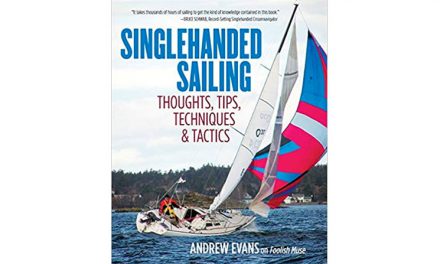BY PAUL ESTERLE (CAPT’N PAULEY PRODUCTIONS, 2006; 261 PAGES; $28.95 USD)
REVIEWED BY DAVE AULTFATHER
Capt’n Pauley’s Boat Repairs and Upgrades is a collection of 78 short how-to articles written by Paul Esterle that were first published in Nor’easter Magazine. Most articles are about three pages in length, including drawings and photos. They are clearly written and the excellent illustrations and photos make them easy to understand. This makes Capt’n Pauley’s Boat Repairs and Upgrades an ideal coffee table book for casual reading and daydreaming because one can pick it up and read an interesting article from start to finish in just a few minutes. However, because the articles are well indexed and contain valuable information for anyone contemplating a project or repair, it can serve equally well as a reference.
This delightful book is the product of Paul Esterle’s considerable experience and his special ability to share that experience with the reader. He states in his introduction that he has done most of the projects and processes he describes in the book. His personal experience is quite evident in his detailed explanations and sage advice. Despite his extensive knowledge and firsthand experience, he does not come off as a know-it-all. His conversational tone is easy to read and, after you have read a few of the articles, you will appreciate the way he can explain complicated ideas in simple terms we can all understand, without sacrificing clarity and accuracy.
Because the book is a collection of articles, it is quite different from most other books about boat repairs and improvements. For example, Don Casey’s book, This Old Boat, chronicles a complete restoration of a single boat from start to finish while Dan Spurr and Bruce Bingham’s classic, Spurr’s Guide to Upgrading the Cruising Sailboat, shows examples of improvements for offshore sailing. By contrast, Capt’n Pauley’s Boat Repairs and Upgrades covers a wider, more eclectic, variety of boating-related topics and projects than most others and it appears that it was written for two types of readers. The first is the boatowner who wants to read about many kinds of repairs and upgrades for the sake of increasing general understanding or to consider projects that he or she may someday want to do. The second is the boatowner who wants a reference book that can provide a concise overview of what is involved in making a specific repair or upgrade. Readers in this second group may use the book as a starting point and then may seek additional detailed information from other sources. Readers from both groups will find the book worthwhile and enjoyable.




